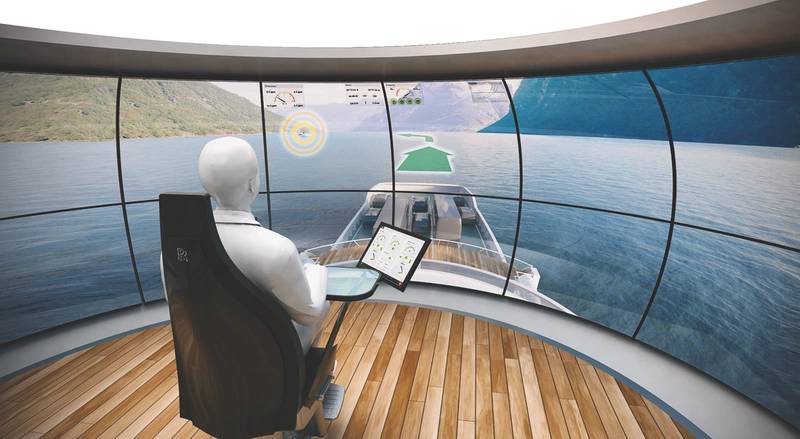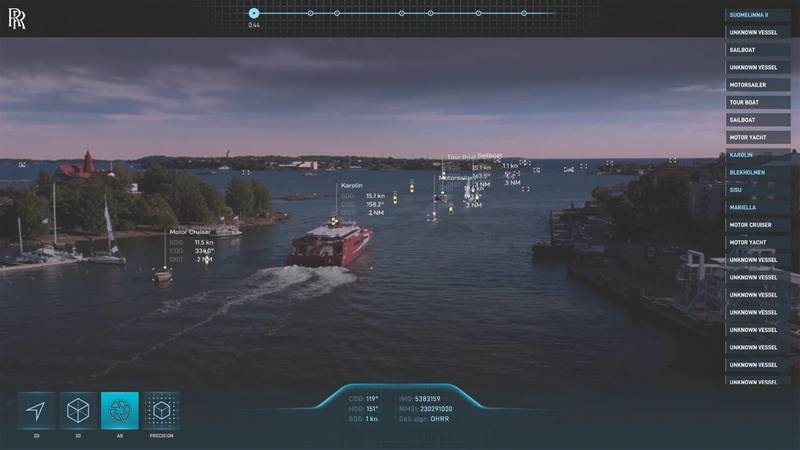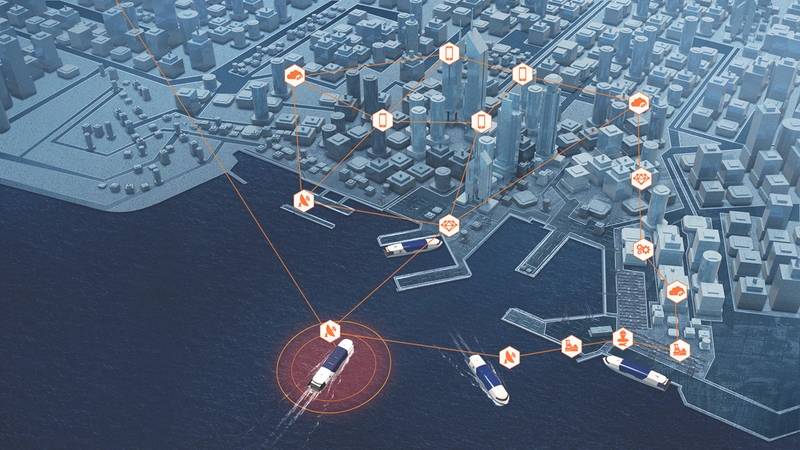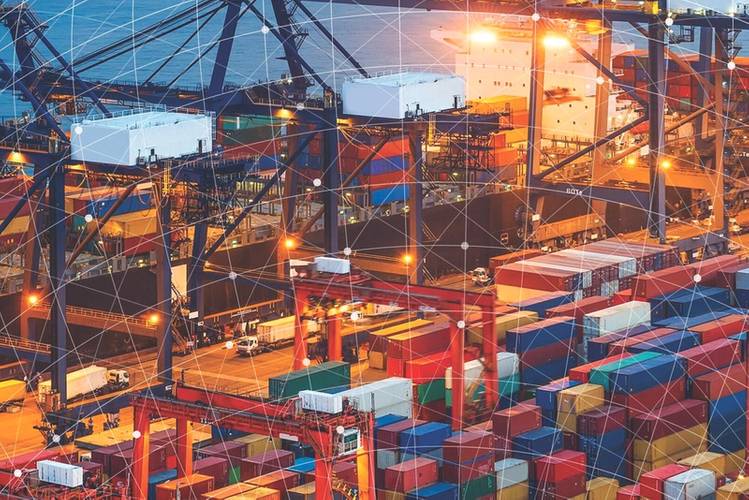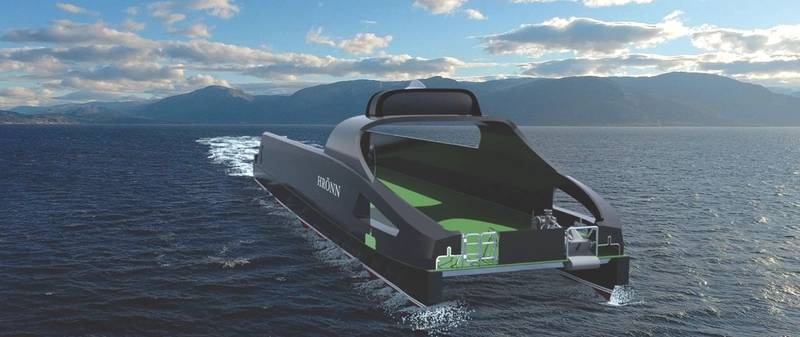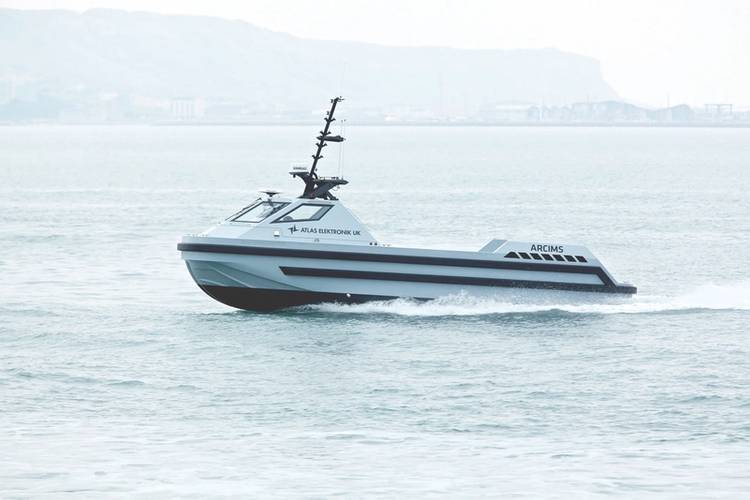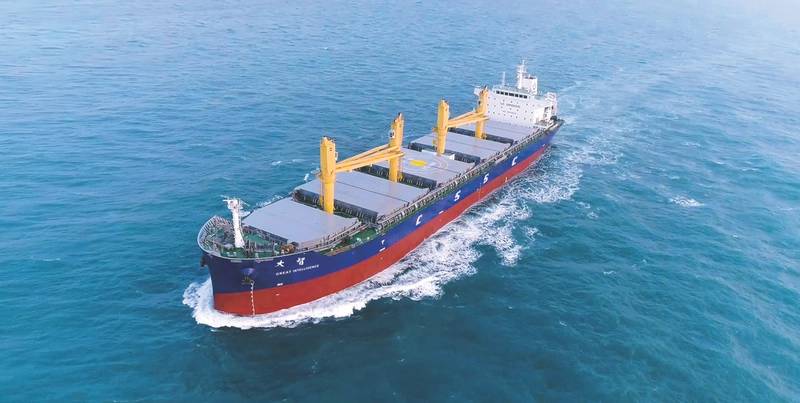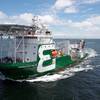The Day of the Unmanned Ship is Dawning
While debates rage in regards to safety, insurance and cyber security, the tech powering autonomous maritime operations continues to power ahead.
Advances in sensor technology, data analytics and bandwidth-to-shore are fundamentally changing the way shipping works. And as operations are digitalized, they become more automated, Dr. Pierre C. Sames, Director of Group Technology & Research at class society DNV GL, has stated.
Governments around the world are looking into unmanned shipping as a way to move more cargo to sea in order to contain the spiraling costs of road maintenance caused by heavy truck traffic, not to mention air pollution. Norway is one of the countries taking a lead in exploring this issue: Norwegian distribution and transportation companies need to be able to bridge the country’s many fjords and sea passages in order to ease transit, and cost is a key consideration in this. In 2016, Norwegian government agencies and industry bodies established the Norwegian Forum for Autonomous Ships (NFAS) to promote the concept of unmanned shipping and, in support of these efforts, the Norwegian government has turned Trondheim Fjord into a test bed for autonomous ship trials. Other nations, most notably Finland and Singapore, are pursuing similar goals.
DNV GL is heavily involved in this development, with a mission to ensure that the technologies that enable ships to operate autonomously will benefit human society and the environment: If we look at recent advances in driverless car technology, the thought of trying something similar with ships does not appear too far-fetched, said Sames. After all, water has at least one great advantage: there is less traffic than on roads and reaction times are usually longer. Automation reduces the potential for human error and, in addition, water transportation can be cheaper and more energy efficient than moving goods on land. DNV GL has initiated or is taking part in several autonomous operation projects and its ReVolt project is one example: here, using a 1:20 scale model of DNV GL’s concept vessel ReVolt, students from the Norwegian University of Science and Technology (NTNU) in Trondheim are investigating how advanced control systems and navigation software could control an unmanned vessel and, once all aspects of t
he autonomous control technology are mature, how such a design could possibly be built and deployed as a feeder vessel on fixed routes in coastal waters.
Another project in which DNV GL is taking part is the Advanced Autonomous Waterborne Applications initiative (AAWA) led by Rolls-Royce: this project is investigating a wide range of technological, safety, legal, economic and societal issues related to the development of commercial-scale unmanned shipping. At DNV GL, we are doing a lot of work to understand the potential risks that come with autonomous ship systems in order to set new standards for them, said Sames. We are already working on developing requirements to be able to test and classify unmanned vessels in the future. In one project nearing completion, Rolls-Royce is supplying automatic crossing systems for two DNV GL-classed double-ended, battery-powered vessels for Norwegian ferry operator Fjord1, scheduled for commissioning this year. The vessels will navigate autonomously under the supervision of a human captain who will be able to take over control of the ship at any time. One of these ferries will still require human-controlled berthing, but the other has been designed to be able to berth itself automatically.
In similar fashion, the unmanned offshore vessel Hrönn, which is under construction at Fjellstrand shipyard for a Norwegian and UK consortium led by Automated Ships Ltd and KONGSBERG Group, will also be delivered this year. This light-duty, fully automated utility ship will be deployed in a shuttle service for offshore installations, but will also be able to be used for a wide range of other purposes from research to fish-farming operations. Furthermore, plans for the first unmanned and fully-electric container feeder ship Yara Birkelandwere announced last year by KONGSBERG Group and Norwegian fertilizer company Yara. After delivery, the ship will initially operate as a manned vessel but will commence traveling between the Norwegian ports of Brevik and Larvik autonomously in 2020. However, Sames has expressed a word of caution: While existing know-how from the aerospace and automobile industries can be leveraged, specific expertise in ship autonomy has yet to be built up, he stated. Another concern is the operational availability of onboard machinery, as immediate repairs are simply not possible on an unmanned vessel: the reliability of all mechanical and electronic components is crucial. In addition, having battery-powered unmanned vessels would eliminate movable parts from the power generation system and make them easier to maintain, noted Sames. Another issue is that there is, as yet, no legal framework that governs the use of unmanned ships. DNV GL is developing a set of rules, but to avoid potential conflicts with international law, autonomous ships will not be able to operate in international waters until appropriate regulations are enacted and enforced by the IMO, and this will take time.
For the deep-sea segments, autonomous shipping is not an option today, Sames stated. These vessels travel distances that go beyond the range of battery propulsion, and they require well-trained crews on board who can respond quickly to any technical issue. If an unmanned vessel had a technical issue in the Atlantic, it would take days to reach it and fix the problem. This would not be safe or economical. Advances in automation can, however, benefit all industry segments in some way, even without fully autonomous control. Some ship traffic might be able to be controlled remotely from land-based virtual bridges, with one ship master overseeing several vessels at the same time. But the most likely scenario is that the technology that enables autonomous ship operations will simply be an additional option for operation – meaning they could be used for specific purposes without fully replacing traditional, manned operations, Sames has suggested. So, for example, autonomous navigation and control systems could support the crew in steering a vessel, thus increasing safety and optimizing operational efficiency.
The most likely scenario is that autonomous shipping will be an additional option for future ship operation, he concluded. The great debate As Ronald Spithout, president of the maritime division of satellite communication specialist Inmarsat, has commented, the idea of autonomous vessels has ignited a great deal of debate across the industry. There are still plenty of challenges that must be overcome, not just with the technology required but also with regulatory issues having to be addressed, and commercial questions on the viability of such vessels needing to be answered. Spithout has observed that, although it may seem counter-intuitive, the likelihood is that technological advances that bring greater levels of automation to certain ship systems will make the role of human maritime industry workers more important than ever. AI-assisted health monitoring of onboard machinery, for example, will reduce failure rates by allowing pre-emptive interventions to fix issues before any breakdown. Such data analytics and access to immediate support from shore-based experts would profoundly change the role of the marine engineer, empowering staff to take a more strategic approach to vessel operation.
Rupert Pearce, CEO of the Inmarsat group, has noted that the true impact and the real benefits of the digital society are only now being experienced within the maritime sector and that the opportunities open to the industry will be as great, and as unexpected, as has been seen in other sectors. He observed that at the highest level, satellite communication offers a greater degree of visibility on vessel and cargo position and performance, which in turn produces tangible metrics that may be shared with the customers of shipowners and managers, as well as with other stakeholders.
Inmarsat and its partners at the Norwegian Maritime Competence Center envisage that the continuous flow of data from a vessel to the shore not only provides specific, measurable benefits, but also captures, analyzes and shares information with key internal and external stakeholders: this wealth of data can, in turn, provide the necessary insight to develop new ways of working and new ways of enhancing the value proposition for the end customer. Satellite communication One increasingly popular benefit of employing satellite communication is the ability to continually and cost-effectively monitor a vessel’s main engine and its associated systems and, through this, to derive real-time vessel performance data. The use of applications such as passage planning and weather routing for optimal sailing will also contribute to a more profitable voyage, while greater availability of bandwidth will also play a vital role in bridge procedures, whether for navigation and situational awareness or for security of physical and cyber assets. Pearce said, however, that the era of the connected ship, and even of the remotely operated vessel, does not signal the end for competent seafarers, nor for their counterparts ashore, but that it does signal large-scale changes. He said that satellite connectivity is now becoming the differentiating factor that can transform commercial opportunities for and the profitability of maritime companies, both for shipowners and their suppliers.
Companies that see how industry, in general, is being transformed understand that there are immediate benefits from the new technologies, boosting their bottom line today, but they also appreciate that, while the future is hard to predict, embracing the digital society will make them best-placed to take advantage of what the new world of the connected ship can bring. The future of connected ships lies in high-speed networks that guarantee the app-triggered bandwidth to support the autonomous ships of the future. To meet regulatory, safety and security needs alone, communications must be accurate, scalable and support the multiple systems required to achieve redundancy. Broadband connectivity supports the real-time decision-making, remote monitoring/control and automated processes that will support the emergence of the autonomous ship. Satellite communication is already being used to trial the behavior of complete autonomous ship systems and to consider the consequences for regulation, cyber security and seafarers. Inmarsat takes part in AAWA initiative Inmarsat is also a participant in the AAWA initiative: the company’s role is to provide the project’s satellite communications link and platform, an essential for remote control capability. Data transfer between ships, as well as between ships and shore-based control centers, is one of the key development areas for remotely-controlled and autonomous ship research, and forms a fundamental element of AAWA. The project will build on existing ship-to-ship and ship-to-shore communication platforms and work on improving their effectiveness for supporting remote-control functionality. Inmarsat’s Fleet Xpress service, delivered through the company’s Global Xpress and L-band constellations, the world’s first hybrid Ka/L-band mobile satellite system, forms the basis of the system. Cyber-enabled intelligence systems for autonomous vessels Lloyd’s Register became involved in autonomous shipping at a very early stage: in 2014 the maritime classification society and business services organization signed a JDP agreement with smart system manufacturer CSSC SERI for the development of the SOMS system, the cyber-enabled intelligence system that has been installed on board bulk carrier vessel Great Intelligence. CSSC then began to discuss the possibility of building a vessel equipped with this system, the Shanghai Merchant Ship Design & Research Institute (SDARI) became involved, and Lloyd’s Register helped to develop the system specification. At that time, Lloyd’s Register had written its cyber-enabled ships guidance and therefore was able to apply this while working with several industry stakeholders in co-creating what would become the first cyber-enabled ships procedure in the marketplace.
Although the technology is new, Lloyd’s Register said it had learnt how to approve a system and its integration with other systems when prescriptive requirements were lacking. Because of the application of Lloyd’s Register’s ShipRight Procedure risk-based methodology and its new rule for software, combined with its understanding of how to apply its existing rules related to the integration of software-intensive systems, the class society was able to work effectively with all parties involved in the project. Lloyd’s Register has commented that there has been much smart talk in the industry but that it has been concentrating its efforts in developing smart solutions and that it has launched notations that address these new areas. The organization said it had been very fortunate to engage with stakeholders that enabled it to set a standard that addressed the unique risks of such novel technologies, making its notations reliable for the industry, being based not only on leading technical capabilities but also on extensive, leading experience. Tracking moving assets for increased operational productivity and efficiency. With the global GDP of the Internet of Things predicted by U.S. information technology research and advisory company Gartner to reach $1.9 trillion by 2020, more and more IoT sensors, systems, and technologies are being implemented across the maritime industry to connect people, equipment, infrastructure, vehicles and other critical assets. However, to truly deliver on the promise of everywhere connectivity, operators applications require a network that can readily adapt to constant change – a living network that moves with their operations.
To meet this demand, Rajant Corporation has developed its Kinetic Mesh as a private wireless network that can keep track of moving assets and provide the continuous on-the-go connectivity they demand. There is a multitude of operational and security functions required for the successful movement of cargo in and out of ports: a Rajant Kinetic Mesh network is designed to help operators mobilize all of these: it enables port operators to meet increasing demands to move more volume – 11,000 cargo containers are moved daily in and out of some the US’s busiest ports – while protecting assets with improved situational awareness (the global video surveillance market is projected to grow at a CAGR of more than 22 percent between 2016 and 2020).
The Kinetic Mesh also enables operators to capitalize on the increased adoption of automation, which is expected to increase productivity in ports by about 30 percent.
(As published in the April 2018 edition of Maritime Reporter & Engineering News)













